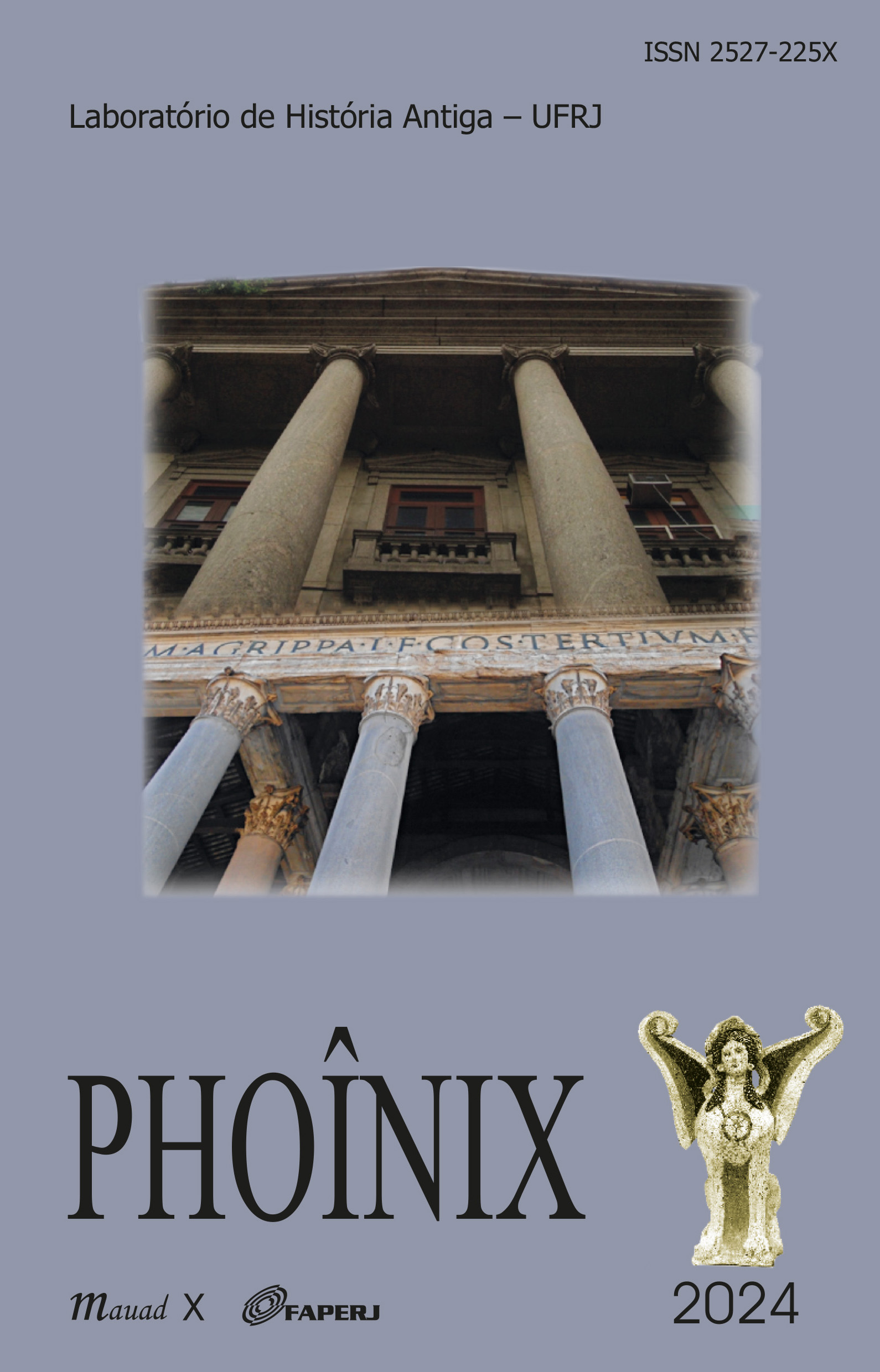ELIZABETH CLARK E A “INVENÇÃO” DOS ESTUDOS SOBRE AS DEVOTAS CRISTÃS NA ANTIGUIDADE TARDIA
DOI:
https://doi.org/10.26770/phoinix.v30n2a6Palavras-chave:
Antiguidade Tardia, História das Mulheres, Cristianismo, Elizabeth ClarkResumo
Neste artigo, temos por objetivo refletir sobre a trajetória de Elizabeth Clark (1938-2021), historiadora norte-americana que se notabilizou como uma das primeiras especialistas a enfocar a atuação das mulheres no cristianismo antigo, em especial na fase final do Império Romano, quando as cristãs despontam como notáveis ascetas e patronas de igrejas e mosteiros, contribuindo assim para o processo de cristianização, então em curso. Nesse sentido, discutiremos o legado intelectual da autora, cuja obra se situa na confluência entre a História das Mulheres, os Estudos de Gênero e a Antiguidade Tardia.
Downloads
Referências
BÍBLIA. Português. Bíblia de Jerusalém. Coordenação de Gilberto da Silva Gorgulho, Ivo Storniolo e Ana Flora Anderson. São Paulo: Paulus, 1995.
BRAKKE, David; FERGUSON, Everett; BURNS, J. Patout. Editor’s note: Elizabeth A. Clark and The Journal of Early Christian Studies. Journal of Early Christian Studies, v. 14, n. 2, p. 137-140, 2006.
BROWN, Peter. Corpo e sociedade: o homem, a mulher e a renúncia sexual no início do cristianismo. Rio de Janeiro: Jorge Zahar, 1990.
CLARK, Elizabeth. Jerome, Chrysostom, and friends: essays and translations. New York: Edwin Mellen, 1979.
____; HATCH, Diane. The Golden Bough, the Oaken Cross: The Virgilian cento of Faltonia Betitia Proba. Chicago: Scholar Press, 1981.
CLARK, Elizabeth. Women in the Early Church. Wilmington: Michael Glazier, 1983.
____. The life of Melania, the Younger: introduction, translation and commentary. New York: Edwin Mellen Press, 1984.
____. Foucault, the Fathers, and sex. Journal of the American Academy of Religion, v. LVI, n. 4, 1988, p. 619-641.
____. Patrons, not priests: gender and power in Late Ancient Christianity. Gender & History, v. 2, n. 3, p. 253-273, 1990.
____. Sex, shame, and rhetoric: en-gendering Early Christian ethics. Journal of the American Academy of Religion, LIX, 2, p. 221-245, 1991.
____. Ideology, History and the construction of “woman” in Late Ancient Christianity. Journal of Early Christian Studies, v. 2, n. 2, p. 155-184, 1994.
____; RICHARDSON, Herbert. Women and religion: the original sourcebook of women in Christian thought. New York: HarperOne, 1996.
CLARK, Elizabeth. St. Augustine on marriage and sexuality. Washington: Catholic of University Press, 1996a.
____. Women, gender, and the study of Christian History. Church History, v. 70, n. 3, p. 395-426, 2001.
____. Asceticism, class and gender. In: BURRUS, Virginia (ed.). Late ancient Christianity. Minneapolis: Fortress Press, 2005, p. 27-45.
____. The lady vanishes: dilemmas of a feminist historian after the “Linguistic Turn”. Church History, v. 67, i. 1, p. 1-31, 2009.
____. The retrospective self. The Catholic Historical Review, v. 101, n. 1, 2015, p. 1-27.
FOUCAULT, Michel. História da Sexualidade: a vontade de saber. Rio de Janeiro: Graal, 1988.
____. História da Sexualidade: o uso dos prazeres. Rio de Janeiro: Graal, 1984.
____. História da Sexualidade: o cuidado de si. Rio de Janeiro: Graal, 1985.
MARTIN, Dale B. Introduction. In: MARTIN, Dale B.; MILLER, Patricia Cox. The cultural turn in Late Ancient Studies: gender, asceticism, and historiography. Durham: Duke University Press, 2005, p. 1-21.
SCOTT, Joan. História das Mulheres. In: BURKE, Peter (org.). A escrita da História: novas perspectivas. São Paulo: Editora Unesp, 1992, p. 62-95.
WHARTON, Annabel Jane. Rereading Late Ancient Christianity: Introduction. Journal of Medieval and Early Modern Studies, 33.3, p. 383-385.
Downloads
Publicado
Como Citar
Edição
Seção
Licença

Este trabalho está licenciado sob uma licença Creative Commons Attribution-NonCommercial 4.0 International License.
Ao encaminhar textos à Revista Phoînix, o autor estará cedendo integralmente seus direitos patrimoniais da obra à publicação, permanecendo detentor de seus direitos morais (autoria e identificação na obra), conforme estabelece a legislação específica.
O trabalho publicado é considerado colaboração e, portanto, o autor não receberá qualquer remuneração para tal, bem como nada lhe será cobrado em troca para a publicação.
Os textos são de responsabilidade de seus autores. Citações e transcrições são permitidas mediante menção às fontes.
O uso dos textos publicados em nossa revista poderão ser distribuídos por outros meios, desde de que atribuídos devidamente à autoria e publicação. A revista está vinculada à licença CCBY-NC (atribuição não-comercial, conforme o Creative Commons).






































